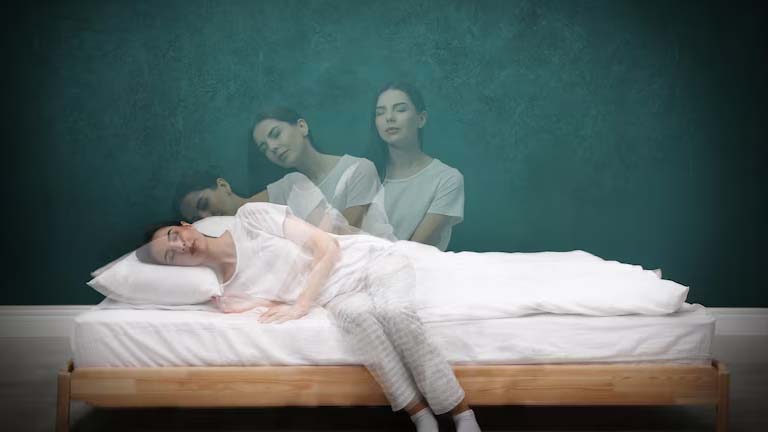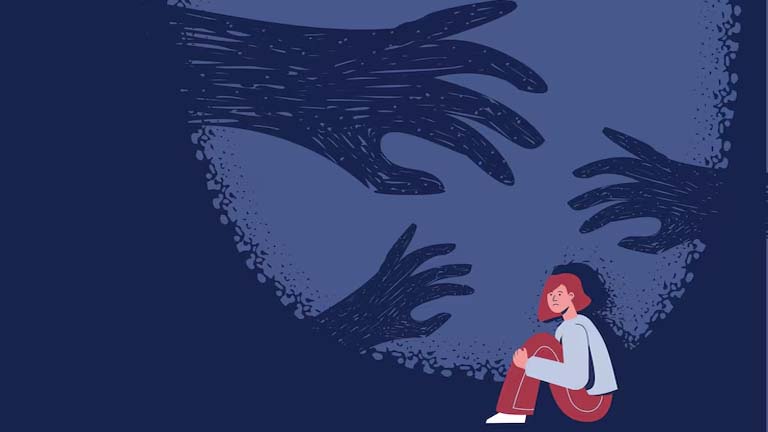Bipolar disorder, formerly known as manic depression, is a mental health condition characterized by extreme mood swings that include emotional highs (mania or hypomania) and lows (depression). These mood shifts can affect sleep, energy levels, judgment, behavior, and the ability to think clearly.
According to the National Institute of Mental Health (NIMH), about 2.8% of U.S. adults experience bipolar disorder each year. The condition can severely impact daily life, relationships, and work performance if left untreated.
In this comprehensive guide, we’ll explore:
-
Types of bipolar disorder
-
Common symptoms and warning signs
-
Causes and risk factors
-
Diagnosis and treatment options
-
Coping strategies and support
Must Check: Schizophrenia Symptoms
Types of Bipolar Disorder
Bipolar disorder is classified into several types based on symptom severity and patterns:
1. Bipolar I Disorder
-
Defined by at least one manic episode lasting 7+ days (or requiring hospitalization).
-
Often includes major depressive episodes.
-
Mania may lead to psychotic symptoms (hallucinations or delusions).
2. Bipolar II Disorder
-
Involves hypomania (a milder form of mania) and severe depressive episodes.
-
Never includes a full manic episode.
-
Often misdiagnosed as major depression.
3. Cyclothymic Disorder
-
Chronic mood instability with hypomanic and depressive symptoms (less severe than bipolar I or II).
-
Symptoms persist for at least two years (one year in children).
4. Other Specified and Unspecified Bipolar Disorders
-
Symptoms don’t fit the above categories but still cause significant distress.
Symptoms of Bipolar Disorder
Symptoms vary depending on the mood episode:
Manic/Hypomanic Episode Symptoms
-
Elevated mood or extreme irritability
-
Decreased need for sleep (feeling rested after 3 hours)
-
Rapid speech and racing thoughts
-
Impulsive or risky behavior (excessive spending, reckless driving)
-
Grandiose beliefs (unrealistic confidence in abilities)
Depressive Episode Symptoms
-
Persistent sadness or hopelessness
-
Loss of interest in activities
-
Fatigue and low energy
-
Difficulty concentrating
-
Changes in appetite and weight
-
Suicidal thoughts or behaviors
Causes and Risk Factors of Bipolar Disorder
The exact cause is unknown, but research suggests a combination of factors:
1. Genetic Factors
-
Family history increases risk (if a parent or sibling has bipolar disorder).
-
Certain gene mutations may play a role.
2. Brain Structure and Function
-
Chemical imbalances in neurotransmitters (dopamine, serotonin).
-
Abnormal brain activity in mood-regulating areas.
3. Environmental Triggers
-
Stressful life events (trauma, loss, major life changes).
-
Substance abuse (alcohol, drugs).
-
Sleep disturbances (insomnia, irregular sleep patterns).
Diagnosis and Treatment Options
Diagnosis Process
-
Psychiatric evaluation (discussing symptoms, medical history).
-
Mood charting (tracking daily mood changes).
-
Lab tests (to rule out thyroid issues or other conditions).
Treatment Approaches
1. Medications
-
Mood stabilizers (Lithium, Valproate).
-
Antipsychotics (Quetiapine, Olanzapine).
-
Antidepressants (used cautiously to avoid triggering mania).
2. Psychotherapy
-
Cognitive Behavioral Therapy (CBT) – Helps manage negative thoughts.
-
Family Therapy – Improves communication and support.
-
Interpersonal and Social Rhythm Therapy (IPSRT) – Stabilizes daily routines.
3. Lifestyle Changes
-
Regular sleep schedule (critical for mood stability).
-
Exercise and a balanced diet (supports brain health).
-
Avoiding alcohol and drugs (can worsen symptoms).
4. Hospitalization (In Severe Cases)
-
Required if there’s a risk of self-harm or psychosis.
Bipolar Disorder: Types, Symptoms, and Treatments
| Category | Details |
|---|---|
| Types | Bipolar I (severe mania + depression) Bipolar II (hypomania + severe depression) Cyclothymia (mild, chronic mood swings) |
| Manic Symptoms | Extreme energy, racing thoughts, reckless behavior, reduced need for sleep |
| Depressive Symptoms | Sadness, fatigue, loss of interest, suicidal thoughts |
| Causes | Genetics, brain chemical imbalances, stress/trauma, substance abuse |
| Treatments | Medications (mood stabilizers, antipsychotics) Therapy (CBT, family therapy) Lifestyle (sleep hygiene, stress management) |
| Emergency Signs | Suicidal ideation, psychosis (hallucinations/delusions), inability to function |
Living with Bipolar Disorder: Coping Strategies
Managing bipolar disorder requires long-term strategies:
1. Build a Support System
-
Join support groups (NAMI, DBSA).
-
Educate family and friends about the condition.
2. Monitor Mood Changes
-
Use mood tracking apps (eMoods, Daylio).
-
Recognize early warning signs of an episode.
3. Stick to Treatment Plans
-
Take medications as prescribed.
-
Attend therapy sessions regularly.
4. Reduce Stress
-
Practice mindfulness and meditation.
-
Engage in relaxation techniques (yoga, deep breathing).
Conclusion
Bipolar disorder is a lifelong condition, but with proper treatment and support, individuals can lead stable, fulfilling lives. Early diagnosis, medication, therapy, and healthy lifestyle choices play a crucial role in managing symptoms.
If you or someone you know is experiencing mood swings, depression, or manic behavior, seek help from a mental health professional. With the right approach, recovery is possible.
FAQs About Bipolar Disorder
Q: Can this disorder be cured?
A: There’s no cure, but effective treatment can manage symptoms.
Q: Is bipolar disorder the same as mood swings?
A: No, bipolar disorder involves extreme, prolonged mood shifts, not just temporary changes.
Q: Can children have this disorder?
A: Yes, though symptoms may differ from adults (often misdiagnosed as ADHD).
Q: What triggers a bipolar episode?
A: Stress, lack of sleep, substance use, and major life changes can trigger episodes.
By understanding this disorder, we can reduce stigma and encourage those affected to seek help. If you suspect you or a loved one may have this condition, consult a mental health specialist for an accurate diagnosis and treatment plan.


